©author(s)
Journal of Migration Affairs
Vol. VI (1-2): 75-90, March 2024
DOI: 10.36931/jma.2024.6.1-2.75-90
Pdf Issue: Inter-State and International Migration.pdf
Abstract
Kashmir is a sensitive political territory, with a long-standing conflict around secessionist insurgency and armed forces’ counter-insurgency, mainly since 1989, resulting in disruption of lives and livelihoods and triggering increased out-migration. Kashmir Valley is witnessing sizeable male migration to different parts of India and abroad. Migration has been helpful for many Kashmiris in finding better earning opportunities, while for some, it is just a means to end their joblessness and underemployment. Based on empirical work in three districts of Kashmir Valley, this study shows how Kashmiri migrants’s choice of destination is no longer confined to North Indian states. They are travelling to far-away states in the East, West and South. Regarding their occupation at destinations, they are engaged in various professions and are no longer only vendors of cloth and woollen products or unskilled labourers. Back home earnings from migration are helping their household economy in a variety of ways – from meeting basic consumption needs to investing in productive avenues. However, against the backdrop of militancy in the Valley, Kashmiri migrants face threats to their security due to a general atmosphere of suspicion against them outside Kashmir.
Key Words: Kashmir, Migration, Remittances, Labour, Security, Development
Introduction
The erstwhile state of Jammu and Kashmir, now a union territory – located in the great north-western Himalayan ranges and forming the northern tip of India – has not remained isolated from the global phenomenon of migration and dispersion of people in the 21st century, widely known as ‘the age of migration’ (Castles and Miller 2003). While the Kashmir region has experienced the processes of in/out-migration since ancient times, such flows increased considerably in the medieval ages with the arrival of Mughals, Afghans, Sikhs and Dogras. It was also the time when thousands of merchant caravans and missionaries from Central Asia came for business and spread Islam in Kashmir (Dabla 2014). The migratory flows in the region intensified in the mid-20th century following the partition of the Indian subcontinent in 1947.
Similarly, out-migration from Kashmir to other parts of the Indian subcontinent is also an old phenomenon. Before partition, Kashmiri labour migrants used to go to Lahore, Punjab, Delhi, etc., to work as manual labourers or vendors to sell products such as wooden crafts, saffron and shawls, especially during winters. This pattern remained unchanged in the post-partition period, except for the direction of their movement, as they started moving to different parts of India – from north to East and Western India. Students started enrolling themselves even in far-away Southern states. The modernisation process, the linkage of a traditional subsistence economy with regional and national markets, tourism, and state interventions have given tremendous rise to aspirations and consumerism among the general masses in Kashmir. At the same time, interest in agriculture and traditional livelihoods, or blue-collar jobs, has declined. Government and non-manual jobs are preferred (Bhat and Rather 2013).
Kashmir is a precarious political territory, with a long-standing conflict and secessionist insurgency mainly since 1989. This resulted in the near total migration of Pandits (Hindus) from Kashmir valley in the early 1990s to the Jammu region and other cities of Northern India. The prolonged insurgency and counter-insurgency operations in the valley have disrupted lives and livelihoods, triggering large-scale out-migration since the 1990s.
The 64th Round of the National Sample Survey (2007-08) shows that of all the migrants, those migrating outside the then state of Jammu and Kashmir (J&K) constituted a little over 18 per cent. According to NSSO data, employment was the main reason for migrating out. Inter-state migrants either engaged in self-employment or regular/salaried employment at destinations. Data for the erstwhile state also shows that migrant households received, on average, over 44,000 rupees in rural areas and over 52,000 rupees in urban areas in one year preceding the survey, and the average consumer expenditure of remittance-receiving households was much higher than non-receiving households.
The same NSSO survey shows that people were also migrating outside the country to different regions and continents for business, employment, education, and training. NSSO puts the numbers at 57001 (9 of every 1000 out-migrants), of which close to 70 per cent were economically active and sent remittances to their families back home. Collectively known as ‘the Kashmiri diaspora’ (Dabla, 2014), international migrants comprise two distinct groups: first is the group of highly skilled professionals, labourers and students migrating to developed countries such as the UK, the USA, Canada and many European and Arab Countries. This flow started in the early 1990s and gathered momentum in the mid-1990s, possibly due to the rise of separatist insurgency in Kashmir, which provided a strong impetus for international migration in the following decades. Thousands of highly qualified people with different qualifications, expertise, and experiences were compelled to migrate to different destinations to escape poverty and insurgency in the conflict-ridden state. The second is the flow of unskilled and semi-skilled labourers, mostly to the Middle East countries. Both types of Kashmiri migrants regularly send good amounts of money to their families back home. This has played a great role in the economic improvement of many families in the Kashmir Valley.
Against the backdrop of the political turmoil in the Kashmir Valley and the out-migration of Kashmiris, the present study tries to identify and analyse the typologies and patterns of labour migration from the Kashmir Valley, reasons for migration, their occupational profile, their destinations, earnings, remittances and their utilisation, and security perception of migrants, with a special focus on inter-state labour and international out-migration. It also seeks to explore the role of remittances as a positive driver of change in the economy in Kashmir at the household level.
Sampling and Data Collection
The study, based on a field survey, was carried out as part of a major research project titled ‘Migration and Remittances: A Socio-Political Analysis of Kashmir,’ sponsored by the Indian Council of Social Science Research (ICSSR), during the year 2014-15. Jammu and Kashmir comprises three divisions: Jammu, Kashmir and Ladakh. However, the universe of this study was the Kashmir Division. Of the ten administrative districts, six districts – Anantnag, Baramulla, Budgam, Ganderbal, Pulwama, and Srinagar – were selected for the study. Their selection was based on the fact that these districts have a relatively larger flow of international and inter-state labour migration than others. Participants of the study were proportionally selected from both rural and urban areas, and representation was given to every tehsil in order to make the sample more representative. The total number of the sample was 480 households that had at least one out-migrant. Twenty-eight households had more than one migrant. The total number of migrants in the study was 508, of which 152 were international and 356 inter-state migrants. Even if the sample may not be strictly representative of the migration situation in Kashmir Division, it gives a fair amount of idea about migration trends in Kashmir.
Table 1: Sample Size (HHs)
Since there was no population frame/source list available of households with at least inter- state or international labour migrants, we adopted the snowball sampling scheme initially. Once we developed a comprehensive list of migrant households, we adopted the systematic sampling scheme to select the sample. Our sample comprises both rural and urban areas and places in the vicinity of towns.
Characteristics of Out-migration
Demographic Profile of Out-migrants
Data shows a significant clustering of migrants (36.22 per cent) in the age group of 36 45 years, followed by 28.14 per cent migrants in the 26 36 age group. There were just 6.29 per cent of female migrants in our sample. 77.16 per cent of the migrants were married. 27.16 per cent had education up to higher secondary-level education, 16.14 per cent were graduates and 3.74 per cent had further higher degrees.
Destinations of International and Inter-state Kashmiri Out-migrants
Nearly 75 per cent of emigrants worked in Middle East countries. Within this region, Saudi Arabia was the biggest destination, drawing over 36 per cent, followed by the UAE (19.73 per cent). The third major destination was Oman (9.21 per cent), followed by Qatar (7.23 per cent) and the United Kingdom (5.92 per cent). South Africa, Malaysia, Bahrain, and Ethiopia were some other destinations.
Table 2: Percentage Distribution of Kashmiri Labour Migrants by Destination
In terms of inter-state labour migration, Goa emerged as the destination for 18 per cent of migrants. The second major destination was West Bengal (10.45 per cent), followed by New Delhi (9.93 per cent), Gujarat (9.32 per cent), Tamil Naidu (7.62 per cent) and Punjab (7.01 per cent). Maharashtra, Andhra Pradesh, Uttar Pradesh and Rajasthan were other important destinations. While destinations of international migration do not throw any surprises, the choice of destinations for inter-state migration shows how far away states in the Western, Southern and Eastern parts of the country, in addition to their traditional choice of North Indian states, have emerged as new destinations.
Typologies of Out-migration
We came across different streams of mobility, with variations in duration, origin, destination and migrants’ characteristics. In the following table, we have classified them into four types.
Table 3: Types of Labour Migration
Occupational Profile of Migrants
Out-migration created newer opportunities for earlier unemployed youth. In our sample, about 28 per cent of labour migrants who were unemployed prior to migration were employed at the time of the survey (see Appendix). Of course, this data might include new entrants into the labour market. Our data also shows that migration either helped them come out of under-employment or to change their profession. 39.57 per cent of migrants who were engaged in embroidery, weaving, or as agricultural and construction labourers had completely moved out of these occupations at their destinations. A new addition to the occupation profile is catering staff (‘party attendants’), which employed 9.25 per cent of migrants. Major changes were witnessed in the case of vendors, which saw almost a 10 percentage point increase (2.75 per cent to 12.5 per cent), and salesmen (2.36 per cent to 6.69 per cent).
If we classify occupational data before and after migration into professionals, hotel/restaurant/ catering workers, technical hands, and vending and sales workers, the data shows the highest increase in the first two groups. Professionals include those in teaching jobs, doctors, engineers, pharmacists, nursing staff, data entry operators, computer assistants, lab technicians, legal professionals, clerical staff, and managers. The increase in this category is from 8.19 per cent to 34.22 per cent, i.e., by 26 percentage points. The percentage of persons engaged in hotel/restaurant/catering work, such as hotel or catering attendants, cooks, and administrative staff, went up sharply from 2.33 per cent prior to migration to 25.54 per cent after migration – a jump of 23 percentage points. Those working as hawkers or salesmen increased from 5.11 per cent before migration to 19.19 per cent after migration. The increase was 14 percentage points. In the technicians category, such as welders, plumbers, electricians, and mechanics, 4.51 per cent of persons were employed before and 13.96 per cent after migration – an increase of almost 9.5 percentage points. Except for a minor increase in the percentage of people working as shopkeepers and security staff at destination (1.96 per cent to 4.32 per cent), others, which include hairdressers, shoemakers, tailors, drivers, painters, blacksmiths and carpenters, remained at the same level of before and after migration (overall, 8 per cent).
Reasons for Migration
As evident from Figure 1, the main motivation for migration was improvement in economic conditions, as cited by 76.75 per cent of the labour migrants. This included better earnings (31.49 per cent), better job prospects (22.83 per cent), inability to find work at their place of origin (16.92 per cent), and lack of a stable source of income for 5.51 per cent of migrants.
However, political factors have also contributed to inducing migration. For 11.41 per cent of labour migrants, the conflict and instability in Kashmir were the reasons for their migration, while 4.72 per cent cited being deprived of human rights as the reason behind their decision to migrate out. It seems that apart from a general desire to escape poverty and militancy, parents’ willingness to send their children to the different states of India and abroad for higher education has contributed to growing migration. Family networks have also facilitated migration for 8 per cent of migrants.
Earnings of Labour Migrants at the Destination Places
The labour migrants earned a varied range of incomes at the destinations. Table 4 shows that an overwhelming majority of 60 per cent of migrants earned up to 30,000 rupees per month only. 16.5 per cent earned a meagre amount of less than 10,000 per month, while 31 per cent earned between 10,000 and 20,000 and 12 between 20,000 and 30,000 rupees. This shows the distressed nature of migration and confirms our findings on the reasons behind migration. Those earning between 30,000 and 50,000 were 14.7 per cent. Only 12 per cent of migrants reported their earnings between 50,000 and 1,00,00 and just 13 per cent, all international migrants, their earnings exceeding one lakh. It is also clearly shown by the data that more than 50,000 per month earnings were contributed overwhelmingly by international migration – 20.08 per cent of these earners were international migrants compared to just 5.3 inter-state migrants.
Table 4: Monthly Earnings of Labour Emigrants by Destination
In Table 5, we have compared migrants’ earnings at their place of origin before migration and at their destination after migration. It is clear from the data that maximum migration benefits accrue to those who are either at the bottom or top brackets of earnings. Those who earned less than 10,000 rupees a month before migration were 37.5 per cent but dropped to 16.5 per cent, a difference of 21 percentage points. Those earning between 10,000 and 20,000 saw a rise from 24.5 per cent to 31 per cent. Similarly, the percentage of those earning 50,000 and above jumped from 3.3 per cent before migration to 25.4 per cent after migration. In fact, there was not a single migrant in our sample who earned more than 70,000 before migration, but their percentage was 21.4 per cent after migration.
Table 5: Income Differential of Labour Migrants Across Occupations at OP and DP
Remittances
Contribution of Remittances in Household Income
It is evident from Figure 2 that migrants’ remittances have become a major source of income for their families, both for international and interstate labour migrants. For the households of inter-state labour migrants, remittances constituted over 41 per cent of their annual income, while for the households of international labour migrants, their remittances comprised nearly 49 per cent of the household annual income.
The data presented above in Figure 2 also shows the difference between the socio-economic backgrounds of households with international and inter-state migrants. For households with international migrants, salary and business were the second and third largest sources of income, constituting 23 and 13 per cent, respectively. Farming constituted a small percentage of their household income. On the contrary, for inter-state labour migrants, farming was the second and relatively substantive source of earning, making for 19 per cent of their annual income. Daily wage and animal husbandry were also important sources of their income. Salary and business contributed to a smaller percentage of their household income. The data also points to an important aspect of the socio-economic background of the cohort of labour migrants in the present study. Labour migrants migrating overseas mostly belonged to economically well-off families.
Utilisation of Remittances
The present study suggests that remittances are utilised for a wide range of purposes – from everyday consumption to meeting the periodic needs of the household to productive investments and asset building. Remittances also contribute to creating household savings (see Table 6). 29.3 per cent of remittances were utilised for regular expenses, including food, education, health, loan repayment, travel, and insurance. Another 21.83 per cent of remittances were spent on meeting periodic expenses, including social ceremonies, house repair, and buying electronic gadgets. A larger chunk of remittances, 46.33 per cent, were spent on creating productive and durable assets and investments. These include constructing dwelling houses or commercial buildings, purchasing other durable assets and land, investing in industry units or businesses, buying agricultural implements, and savings.
Table 6: Utilisation of Remittances at the Household Level
Table 6 clearly shows a difference in the pattern of remittance utilisation between inter-state and international migrants. A larger share of remittances sent by international migrants was spent on investing in land and business activities. They also spent more on constructing commercial buildings, purchasing vehicles, and educating their children. Moreover, their savings were much more than inter-state migrants. Two factors can be attributed to this difference. First, they came from a better socio-economic background where the families had other stable sources of income too. A larger number of them had migrated for better opportunities rather than merely in search of opportunities. Second, their remittance in terms of monetary volume was higher. Hence, due to the combined effect of these two factors, spending on health, loan repayment, durable assets, and house repair constituted a lesser share of their remittance utilisation.
On the contrary, inter-state migrants were from less endowed economic backgrounds. Back home, a greater number of their households were engaged in agriculture; hence, house repair, loan repayment, agricultural implements, and durable assets were their priorities in utilising remittances. Clearly, their priorities were improving their immediate living standard, leaving them with less investible surplus and savings.
Based on the data, one can safely conclude from the data above that the greater the household income level from sources other than remittances, the greater the possibility of using remittances for investments and savings.
Perception of Out-migrants About Their Security
The ongoing conflict in the Kashmir Valley has created a particular figure of Kashmiri migrants in other parts of the country – a figure which arouses suspicion and apprehension about them, occasionally resulting in their harassment and violence against them.
Our fieldwork reveals that there has been growing apprehension amongst Kashmiri youth when they travel to other parts of India for jobs or education because they are worried for their safety as they experience hostility towards Kashmiris in general, where Kashmiris are imagined a danger to the national security and they often hear ‘if you are a Kashmiri, you are a Muslim, you are pro-Pakistani and you have to be dealt with accordingly’ (Punjabi 1991; p. 84). Some respondents said that a Kashmiri can land in jail on a mere suspicion.
In recent years, there have been several incidents of harassment against Kashmiris in many parts of the country. For example, Saliq and Stevens (Hindustan Times 12 April 2016) report that between February 2013 and April 2016, there were about 30 incidents of physical attacks on Kashmiri young people studying in various colleges and universities in different states of India. Since the onset of the latest turmoil in July 2016, such incidents have escalated, and there have been a number of attacks on Kashmiri people in Delhi, Rajasthan, Utter Pradesh, Madhya Pradesh and Haryana. Kashmiris are known to be under intense surveillance by secret security agencies across the country, and this increases their apprehension and anxiety. We attempted to capture this political dimension of out-migration by Kashmiris by gauging how secure migrants felt at their destination places.
Table 7: Perceptions of Labour Emigrants about Security at Destination Place
An analysis of data presented in Table 7 shows a stark difference between inter-state and international migrants. Only 31 per cent of inter-state migrants explicitly expressed feeling secure at their destinations. While 53 per cent felt insecure and 13 per cent somewhat insecure; thus, those who expressed concerns over their security at destinations within India totalled 66 per cent. These figures are worrisome and show that the situation in Kashmir has repercussions for Kashmiris outside Kashmir.
In contrast, over 81 per cent of international migrants expressed they felt secure at their destinations. The percentage of those expressing insecurity was just 4 per cent, and those feeling somewhat insecure were about 12 per cent. This points to an irony where migrants in our sample felt less secure in their own country than abroad.
As Jone (1998) says, apart from remitting and transferring money, skills, and technologies, labour emigrants also help transfer and remit democratic values, modern norms and perceptions, etc., thereby serving as a ‘bottom-up’ source of development. Migrants carry social remittances (ideas, practices, skills, identities and networks) and cultural remittances (emotional attachments) to their destination places or back home on their return. We argue that the feelings of insecurity by labour migrants at their destinations may also fall under the preview of social remittances. This important aspect of migration requires further exploration, particularly its impact on inter-community relationships in the Valley.
Expectations of Policy Support
To better harness the outcomes of migrations, international migrants want the government to rationalise their policies vis-à-vis remittance transfer by simplifying complex bureaucratic procedures, keeping interest rates favourable, and the exchange rates stable and realistic. This would encourage emigrants to remit through formal remittance channels. Undocumented emigration is emerging as a concern as intermediaries prey on willing but uninformed people willing to migrate abroad. India also needs to strengthen its support to migrants to protect their rights in the face of crises. Given the precarious political character of Kashmir with secessionist insurgency, the migration of young Kashmiri people for jobs and education could serve as a ‘safety valve’. Therefore, proper counselling about opportunities related to overseas jobs and student scholarships must be provided.
Another suggestion is that financial literacy needs to be improved among migrants. They need to be educated about technology-based remittance services. Proper guidance on how to invest their surplus in productive ways will enhance the long-term benefits of their remittances.
Conclusion
Out-migration has picked up in Kashmir Valley since the 1990s with the rise of insurgency and the counter-insurgency offensive by the State. Migrants from Kashmir Valley travel to several parts of India, mainly as seasonal migrants, Middle-East Asia and some other parts of the world. Migrants include highly-skilled, semi-skilled, and unskilled persons. Occupationally, they are professionals, technicians, hawkers, and hospitality sector staff. Highly skilled professionals prefer to migrate abroad, while other categories of migrants migrate are mainly inter-state migrants. Migrants’ occupations, earnings, and destinations are co-related to their family’s socio-economic background.
While migration helps a section of the unemployed to find livelihoods, three-fourths of migrants leave Kashmir in search of better jobs and earnings. The desire to escape the ongoing conflict also motivates a section of the population to migrate. Data suggest that migrants both at the bottom of earning and the top bracket of earning before migration improved their earnings after migration. Remittances significantly contribute to migrant households’ annual incomes. Remittances help them reduce their economic distress, tide over their indebtedness, and increase spending on food, health, education, and other consumption needs. The emerging pattern of remittance utilisation indicates that international migrants, who also come from a better-endowed background, spend more on productive investment, while the majority of inter-state migrants spend more on immediate consumption needs.
An important finding of this study is the construction of the figure of Kashmiri migrants outside Kashmir. Against the backdrop of secessionist militancy in Kashmir Valley, in the popular imagination of people at destinations within India, an average Kashmiri is seen with suspicion, and sometimes they become a target of harassment and violence. This has created a sense of insecurity in the majority of the inter-state Kashmiri migrants. This may have an impact on their social remittance, an aspect that needs more studies.
The government can help International migrants by facilitating hassle-free emigration and remitting, whereas for inter-state migrants, it should initiate measures to ensure their safety and security at destinations and during transit. Inter-state migration should be seen as a real force for social, economic and cultural interaction and integration of Kashmiris with the rest of the country. As the presence of Kashmiri labour migrants and students is increasing steadily across different parts of the country, a lot needs to be done on the part of the Central government to maintain secularity, multicultural orientation among the general masses, and security for all across the nation.
[This research article is based on findings from a major research project, “Migration and Remittances: A Socio-Political Analysis of Kashmir,” sponsored by the Indian Council of Social Science Research (ICSSR), New Delhi, under grant Award Reference: (F. No. 02/ 255/2012/RPR).]
Notes
1. In our survey data (of 2014-15), there were 152 migrants to another country from Kashmir Valley in a sample of 480 households. This leads us to believe that the actual number of migrants from the Valley may be much higher than estimated by the NSSO.
References
Bhat, M. A. and T. A. Rather. 2013. “Youth Transitions in Kashmir: Exploring the Relationships between Habitus, Ambitions and Impediments.” South Asia Research 33 (3): 185 204.
Castles, S. and J. Miller. 2003. The Age of Migration. New York: Guilford Press.
Dabla, B. 2014. Migration Trends and Population Changes in Jammu & Kashmir State. New Delhi: Kalpaz Publications.
Jones, Richard C. 1998. “Introduction: The renewed role of remittances in the New World Order.” Economic Geography 74 (1): 1–7.
National Sample Survey Office. 2010. Migration in India, Report No 533 (64/10.2/2), 2007-2008. Ministry of Statistics and Programme Implementation, New Delhi.
Saliq, S and H. Stevens. 2016. “Tracking Attacks on Kashmiri Students Outside the Valley: 30 Incidents of Violence Since February 2013.” Hindustan Times. 12 April.
Appendix
Percentage Distribution of Worker Migrants Before and After Emigration by Occupation


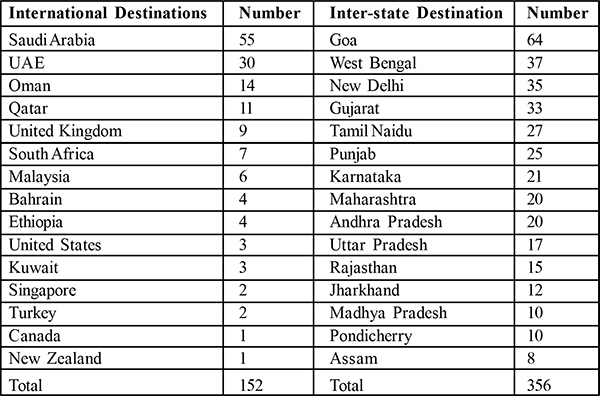
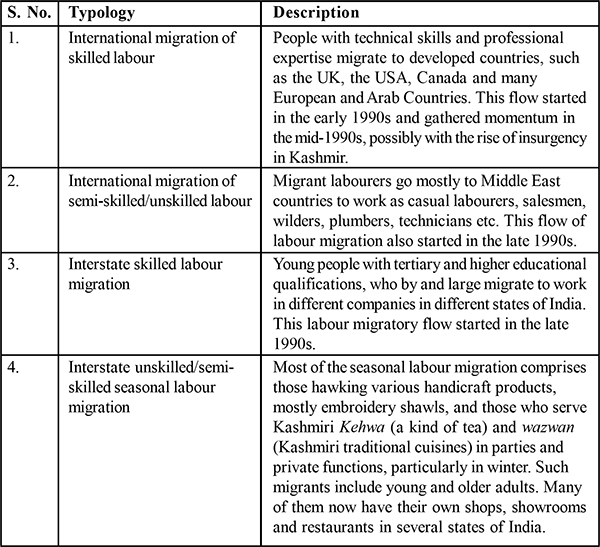
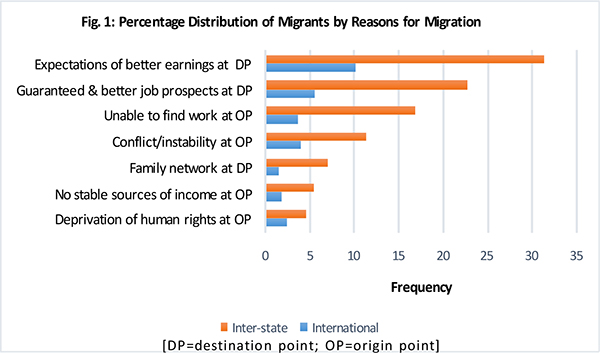
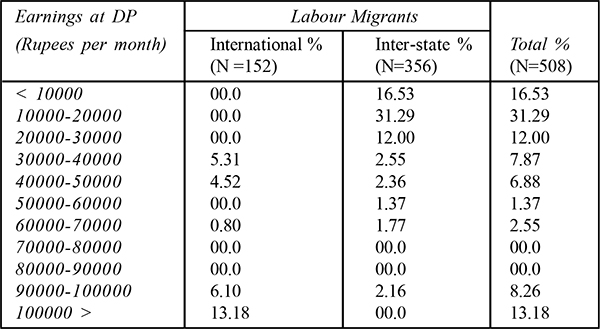
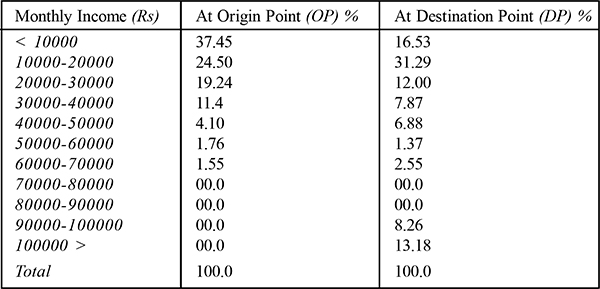
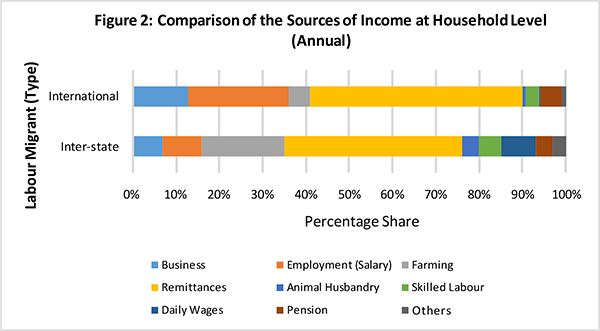
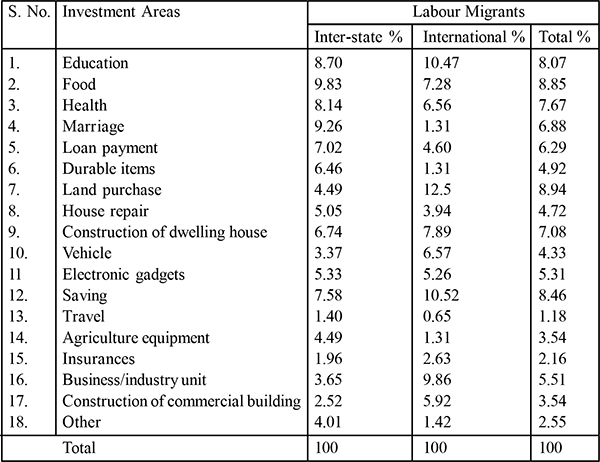

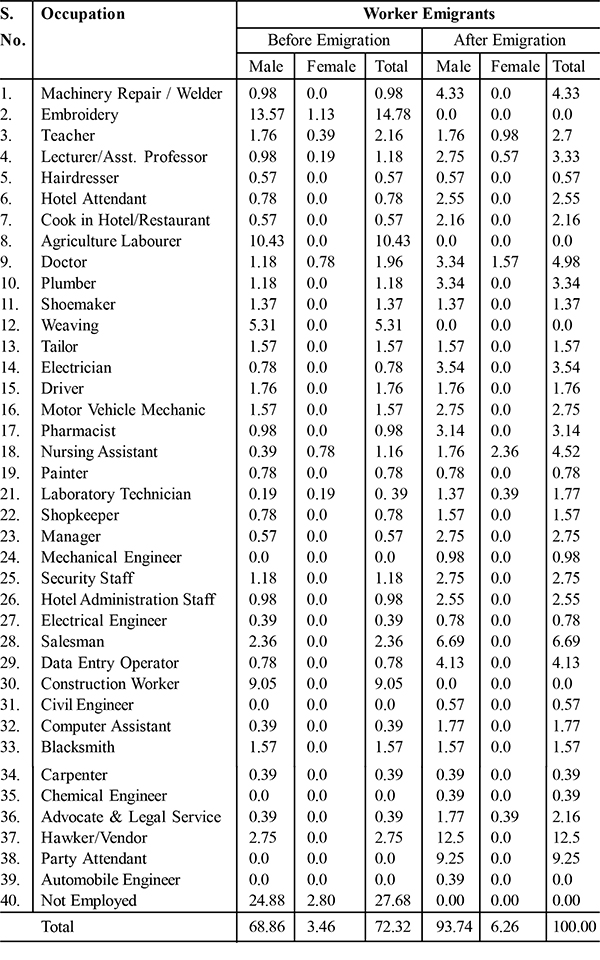

Leave a Comment
Comments are moderated and will be published only if found appropriate. Comments may take some time to appear.
Your email address will not be published. Required fields are marked with *